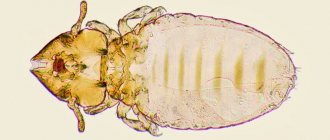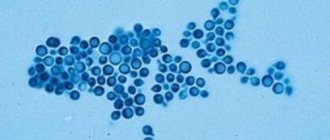Sarcoma (cancer) in cats is diagnosed, unfortunately, quite often. Animals can get it, just like people. Oncological diseases bring a lot of suffering to pets and their owners, since in most cases they are incurable. Despite the fact that scientists around the world are searching for effective ways to combat cancer, they have not yet been found. The drugs prescribed for treatment have a rather negative effect on the body as a whole, poisoning not only malignant tumors, but also vital organs.
If we talk about cancer in general, it is worth noting that there are several varieties. One of the most aggressive is sarcoma. Let's talk about it in this article.
Sarcoma (cancer) – what is it?
Sarcoma (cancer) in cats is an insidious disease. Characterized by the formation of malignant tumors. They consist mainly of connective tissue.
The peculiarity of sarcoma is aggressiveness. With this form, metastases affect neighboring organs in a short period of time. Unfortunately, it is almost impossible to determine the development of the disease in the early stages, since it occurs without visible symptoms.
Soft tissue sarcoma in cats and other types of disease most often lead to death. The main reason for such serious consequences is late diagnosis. As a rule, surgical intervention no longer brings positive results.
Currently, many types of sarcoma are known. They are studied by scientists. In their opinion, the most dangerous are the following:
- fibrosarcoma;
- liposarcoma;
- myxosarcoma.
Modified cells originate in synovial tissue. Due to their rapid growth, the connective tissue is damaged in the shortest possible time. Malignant tumors can affect both tissue and bones of the animal. As a rule, they arise suddenly, localizing in any place without exception.
Why is it developing?
The exact reasons that contribute to the appearance of osteosarcoma and other types of this pathology in cats have not been identified to this day. However, veterinarians agree that the following factors can contribute to the development of this disease:
The disease can develop in a furry cat after a viral infection.
- irradiation;
- infectious and viral pathologies;
- influence of carcinogens;
- frequent mechanical damage;
- genetic predisposition;
- hormonal imbalance;
- deterioration of the immune system.
Classification
Sarcoma in cats is divided into two groups according to location, affecting either soft tissue or hard tissue.
This disease can also be classified according to other parameters. Depending on them, the following types are distinguished:
- Post-injection – a tumor forms in the withers area.
- Rhabdomyosarcoma - affects striated muscle tissue.
- Liposarcoma is a cancer of the fat layer that often causes lumps to form on a cat's abdomen.
- Fibrosarcoma is a lesion of fibrous tissue.
- Osteosarcoma is a malignant process that occurs in the bones.
In veterinary practice, the latter type is found in 80% of cases, so it is considered the most common. As metastases grow, any organs and lymph nodes can be affected.
Veterinary clinic of Dr. Shubin
Incidence and risk factors
Canine osteosarcoma
Canine osteosarcoma is the most common primary bone tumor in dogs, accounting for about 85% of all neoplasms of the skeletal system. In the United States, approximately 10,000 dogs with osteosarcoma are reported each year, but these numbers are somewhat underestimated because they do not include unconfirmed cases.
Canine osteosarcoma is observed primarily in large and giant breed animals with an average age of onset of the disease of about 7 years. The earliest case of osteosarcoma development was described in a 6-month-old puppy; at the age of 18-24 months there is a small peak in the incidence of osteosarcoma. Primary osteosarcoma of the ribs of dogs is observed in younger animals, the average age of its development is 4.5-5.4 years.
As mentioned above, dogs of large and giant breeds are predisposed to the development of osteosarcoma, however, the size of the dog and especially the height of the animal may play a greater role in the predisposition to osteosarcoma than the specific breed. In the United States, the highest incidence of primary canine osteosarcoma has been identified in St. Bernard, Irish Setter, Doberman Pinscher, Rottweiler, German Shepherd and Golden Retriever. In one review, 29% of cases of primary osteosarcoma were observed in dogs weighing more than 40 kg, and only 5% of this type of tumor developed in the axial skeleton. In dogs weighing less than 15 kg, the incidence of primary canine osteosarcoma is only 5% of the total number of cases of osteosarcoma in the animal population, but in small dogs, about 59% of cases of osteosarcoma are localized in the axial skeleton. There is also evidence of some gender predisposition to canine osteosarcoma, but this is somewhat contradictory.
Damage to the appendicular skeleton in canine osteosarcoma is observed in ¾ of cases (75%), and only ¼ (25%) of all cases of tumor occur in the axial skeleton. The typical location of the tumor when the appendicular skeleton is affected is the metaphysis of the long bones, while the forelimbs are affected twice as often as the hind limbs. In the forelimbs, the typical location of canine osteosarcoma is the distal radius and proximal humerus. Localization of canine osteosarcoma near the elbow joint is extremely rare (damage to the distal humerus and proximal radius). In the hind limbs, the favorite sites for canine osteosarcoma are the distal femur, proximal tibia, and distal tibia, and tumor development in these areas is approximately equal in frequency. Primary osteosarcoma of dogs with localization distal to the carpal and hock joints is quite rare. The location of the tumor does not have any effect on the prognosis of the disease. In one report of 116 cases of primary osteosarcoma of the axial skeleton, the location of the lesions was as follows: mandible - 27%, maxilla - 22%, spine - 15%, skull - 14%, ribs 10%, nasal cavity and paranasal sinuses - 9%, pelvis – 6%.
There are isolated descriptions of the development of osteosarcoma in dogs in the bone of the penis and patella. Cases of multifocal osteosarcoma at the time of initial diagnosis are about 10%. Primary osteosarcoma of dogs developing outside the skeleton is extremely rare, but there are descriptions of its development in the tissues of the mammary glands, subcutaneous tissues, spleen, intestines, testes, vagina, eyes, gastric ligaments, synovium, meningeal membranes and adrenal glands.
Feline osteosarcoma
In cats, compared to dogs, primary tumors of the skeletal system are much less common, with an average incidence of all bone tumors of 4.9 per 100,000 animals in the population. According to various sources, from 67% to 90% of all bone tumors in cats are malignant, and from 70% to 80% of these tumors are osteosarcoma.
Older animals are more predisposed to the development of osteosarcoma in cats, with an average age of tumor development of about 9 years, the earliest case of the disease was described at the age of 1 year of the animal. The axial skeleton is affected at an older age compared to the appendicular one. A number of authors have suggested some gender predisposition, but the evidence is somewhat contradictory.
Feline osteosarcoma can develop in the appendicular and axial skeleton of the animal, as well as outside the skeleton. In the appendicular skeleton, feline osteosarcoma develops approximately twice as often as in the axial skeleton (data are somewhat contradictory from different sources). When feline osteosarcoma is localized in the axial skeleton, the animal's jaws (especially the oral cavity) and pelvis are most often affected, but cases of osteosarcoma of the ribs and vertebrae are also described. When localized in the appendicular skeleton, feline osteosarcoma is most often located in the distal femur and proximal tibia. With extraskeletal localization of feline osteosarcoma, the tumor often develops at the site of vaccination (interscapular region, dorsal lumbar region, hip area). Other sites of feline extraskeletal osteosarcoma include the eyes, mouth, and mammary glands.
Etiology
The exact reasons for the development of osteosarcoma have not been determined; the greatest significance in the development of this tumor is attributed to the influence of various mechanical factors. Canine and feline osteosarcoma can develop at sites where metal implants are used to treat bone fractures. The development of canine osteosarcoma has also been described at bone allograft sites. A certain role in the development of osteosarcoma in dogs and cats is attributed to the use of ionizing radiation; the disease is quite often recorded in animals receiving treatment for other types of tumors through radiation therapy, and this correlates with the data of humane medicine. There are isolated descriptions of the development of osteosarcoma in dogs after total hip replacement, at the site of osteochondritis dissecans of the humerus, and at the site of a bone cyst. One theory suggests the influence of increased mechanical load in certain areas of the bone on the occurrence of osteosarcoma in dogs, citing the development of appendicular osteosarcoma in a certain location (see above) in large breed dogs, but this assumption has not been properly confirmed.
Research is being conducted on the role of genetic and molecular factors in the development of osteosarcoma, but reliable definitive data have not yet been obtained. There is speculation about the viral nature of the tumor, since osteosarcoma can affect entire litters and can be induced by injecting tumor cells into fetal dogs, however, the virus has not been isolated.
Pathology and behavior
Osteosarcoma of dogs and cats is a malignant mesenchymal tumor of primitive bone cells. These cells produce the extracellular matrix of osteoid tissue, and the presence of an osteoid tumor is the basis of histological diagnosis, distinguishing osteosarcoma from other bone sarcomas. The histological pattern of osteosarcoma can vary significantly within a single tumor, small biopsy samples of osteosarcoma can lead to misdiagnosis of chondrosarcoma, fibrosarcoma or hemangiosarcoma or simple bone reaction, so it is important to perform histological analysis of the entire tumor to make a definitive diagnosis.
Osteosarcoma of dogs and cats is a malignant tumor with a high potential for metastasis already at the onset of the disease (in dogs it is much higher than in cats). At the time of diagnosis, less than 15% of animals have radiographically detectable pulmonary or bone metastases, but the average survival time after diagnosis is only 19 weeks, and the formation of metastases determines the shortened lifespan. Osteosarcoma is characterized by tumor metastasis through the hematogenous route, and in rare cases, spread to regional lymph nodes is noted. The typical site for metastasis is the lungs, but the tumor can also metastasize to bone and other soft tissues.
Clinical signs
When canine osteosarcoma is localized in the appendicular skeleton, the primary reason for contacting a veterinary clinic is often increasing lameness and palpable swelling in the area of tumor localization. Sometimes owners report a minor traumatic event that occurred immediately before the onset of lameness.
In middle-aged large and giant breed dogs, lameness and swelling at the metaphysis of long bones puts osteosarcoma at the top of the list of differential diagnoses. Lameness in canine osteosarcoma is characterized by a progressive course and only worsens over time; pain develops with the formation of microfractures in the tumor area or destruction of the periosteum against the background of osteolysis of the cortical bone and the spread of the tumor from the medullary canal to the outside. Sometimes, the reason for treatment may be the acute development of lameness against the background of a pathological fracture, but this type of fracture in osteosarcoma is recorded quite rarely.
When the axial skeleton is affected, the symptoms vary significantly depending on the location, but in any case there is a progressive growth of osteosarcoma and compression of surrounding tissues. Thus, when osteosarcoma affects the oral cavity, there may be disturbances in eating, facial deformation when localized in the bones of the skull, various neurological disorders when localized in the spine, etc. When osteosarcoma is localized on the ribs, the primary symptoms are usually associated with the formation of masses of varying degrees of pain, breathing problems, and the formation of pleural effusion is observed quite rarely.
Metastasis of osteosarcoma to the lungs is characterized by a slow development of signs of respiratory failure compared to other types of metastatic lesions of the lungs, even with radiographic detection of metastases, dogs may remain asymptomatic for many months, but most experience decreased appetite and general malaise. Dogs with pulmonary metastases from osteosarcoma may develop hypertrophic osteopathy.
In cats with osteosarcoma, characteristic signs are lameness, swelling and deformity; clinical manifestations largely depend on the specific location of the primary tumor. In cats, unlike dogs, significant swelling may develop in the area of tumor growth that is not accompanied by the development of severe clinical signs (eg lameness). Also, cats are less likely to have pulmonary metastases at the time of diagnosis of osteosarcoma.
When diagnosing canine osteosarcoma affecting the skeleton, the first method of examination is a qualitative radiographic examination of the animal. General abnormalities in images of osteosarcoma include almost complete lysis of bone in the affected area, together with osteoblastic and osteoclastic changes of varying severity in the periphery. Radiographic features of osteosarcoma of bone are pronounced lysis of the cortical layer (up to pathological fractures), formation of new bone around the tumor (such as a sunburst) with elevation of the periosteum and a significant increase in the volume of surrounding soft tissue. Early in tumor development, radiographic changes may include loss of the clear trabecular pattern of the metaphysis and blurring of the transition zone at the site of the tumor. Radiographic changes in canine osteosarcoma depend on the size, histologic subtype, location, and time of tumor development. Radiographic signs of osteosarcoma are similar to those of osteomyelitis, especially fungal. Radiographic changes in feline osteosarcoma are similar to those in canine osteosarcoma.
When conducting a radiographic examination of the animal, an attempt is also made to identify metastases in the lungs and exclude other diseases from the list of differential diagnoses (eg secondary metastatic bone tumors). Metastases of osteosarcoma in the lungs are not detected radiographically until they reach a size of 6-8 mm in diameter. More modern imaging modalities (eg CT, MRI, nuclear scintigraphy) may play a role in the evaluation of an animal with osteosarcoma, but current requirements for tumor staging and treatment are still based on radiographic findings.
The animal also undergoes a complete physical and orthopedic examination, attention should be paid to the examination of regional lymph nodes, and if they are enlarged, fine needle aspiration is performed, followed by cytological examination. The results of cytological examination of samples do not lead to a definitive diagnosis of osteosarcoma, but can play a significant supporting role in choosing treatment options. There are certain cytological criteria that help in making a final diagnosis, but these diagnostic procedures should be carried out by an experienced specialist at a reference clinic.
When examining a patient with osteosarcoma, special attention is paid to identifying diseases that may increase the risk of anesthesia-related mortality, especially with regard to cardiac function. The minimum data for examining the animal should include a complete blood count, platelet count, serum biochemical analysis and urinalysis.
Diagnostics
The presumptive diagnosis of osteosarcoma is based on the predisposition of certain animals to the disease, physical examination findings, and characteristic radiographic changes. The list of differential diagnoses includes other primary bone tumors (chondrosarcoma, fibrosarcoma, hemangiosarcoma), metastatic bone tumors, multiple myeloma or bone lymphoma, systemic mycoses with bone localization, osteomyelitis and bone cysts (the latter is quite rare). The definitive diagnosis of osteosarcoma requires pathological examination after removal of the entire tumor.
Treatment
The basis of treatment for osteosarcoma in cats and dogs is to control the growth of the primary tumor and control the development of distant metastases. Removal of the primary tumor site relieves the animal of the source of pain (improves quality), but in dogs does not increase life time (does not affect the duration). Surgical treatment of osteosarcoma in dogs without chemotherapy is regarded as a temporary (palliative) measure, due to the fact that at the time of diagnosis, most animals already have micrometastases, and amputation does not prevent their further development and growth.
Amputation
For canine appendiceal osteosarcoma, amputation of the affected limb is the standard of care. If the lesion is located on the forelimb, its complete amputation is carried out; if the appendiceal osteosarcoma is localized on the hind limb, amputation is carried out through disarticulation of the hip joint. At this level of amputation, an optimal level of osteosarcoma control and the best cosmetic effect are achieved.
Even in large and giant breed dogs after amputation, it is possible to maintain adequate locomotion and relieve the animal from pain; most pet owners are satisfied with the quality of life of their amputated animal. Degenerative joint lesions on the opposite side are rarely a contraindication to amputation. The decision to amputate the affected limb in an animal with osteosarcoma, together with severe neurological and orthopedic lesions on the opposite side and other systemic diseases, should be carefully weighed; a number of contraindications leading to refusal of amputation may arise. In such cases, pain control in the animal can be achieved through narcotic and non-narcotic analgesics, as well as local irradiation of the tumor.
Limb-sparing surgery
Although in most dogs with osteosarcoma satisfactory results can be obtained after amputation of the limb, in a small number of patients it is preferable to perform surgery aimed at saving the limb. This applies to patients with previous neurological or orthopedic lesions on the side opposite to osteosarcoma, or when the owners categorically refuse amputation. To date, a significant amount of conservation operations have been performed in specialized veterinary clinics, preserving limb function and without deteriorating the overall life span. Suitable candidates for salvage surgery in dogs are patients with no secondary diseases and no more than 50% osteoarcoma bone involvement (determined radiographically). Other criteria for selecting candidates for salvage surgery are: absence of pathological fractures; soft tissue involvement of less than 360 degrees, and the presence of hard, definable soft tissue masses rather than edematous lesions. Most dogs are treated with local or systemic chemotherapy before surgery.
The most suitable candidates for limb-sparing surgery are animals with osteosarcoma lesions of the distal part of the radius, with the best results in preserving supporting function. When the tumor is localized in other parts of the appendicular skeleton, the prognosis for restoration of limb function is much worse. Limb-sparing surgery should only be performed in highly specialized veterinary clinics with qualified personnel. Another treatment option aimed at preserving limb function is radiation therapy; this method also has good results aimed at controlling the growth of a local tumor, but can only be reproduced in specialized clinics. For non-appendiceal osteosarcoma, the decision to perform surgery depends on the location of the primary tumor.
Chemotherapy treatment
To most effectively treat osteosarcoma, multimodal therapy is used to control both local disease and distant metastases. Although amputation, limb-sparing surgery, and radiation therapy are highly effective in controlling the primary tumor, the mainstay of treatment for canine osteosarcoma is chemotherapy, which can prolong the animal's lifespan. Improvements in chemotherapy treatment regimens and the introduction of new chemotherapy drugs into the regimen have significantly improved the outcome of the disease.
In cases of canine osteosarcoma, the chemotherapy drugs used are mainly doxorubicin, cisplatin and carboplatin in various combinations. Many protocols are used for chemotherapy treatment, but none of the chemotherapy protocols used for chemotherapy treatment of dogs have shown significant benefit.
Forecasts
When only amputation is performed against the background of canine osteosarcoma, the average lifespan is about 4 months, about 90%-100% of animals die within a year from the moment of diagnosis. When amputation is combined with chemotherapy treatment, 40%-50% of patients have a chance to live for one year; about 20%-25% of patients with osteosarcoma survive 2 years.
Several prognostic factors have been established for canine osteosarcoma, including adjuvant chemotherapy, histologic type, alkaline phosphatase levels (normal and bone-specific), and possibly small body size of the animal. The percentage of tumor necrosis obtained on an osteosarcoma scan may also predict outcome. Dogs with osteosarcoma developing before age 5 years have a poorer prognosis, as do dogs with identifiable pulmonary and regional lymph node metastases at diagnosis. The extraskeletal location of the tumor and large tumor volume also worsens the prognosis.
In cats with osteosarcoma, unlike dogs, the prognosis is good or excellent, many animals can be cured only through amputation, metastases can develop in the same way as in dogs, but are recorded much less frequently.
Photo 1. A 6-year-old Rottweiler male at an appointment at a veterinary clinic; a month ago, the owners noticed lameness in the left hind limb. When palpating the knee area, the veterinarian noted thickening of the tissue just above the knee, and a decision was made to conduct a radiographic examination. In the photo the dog is standing with his affected limb tucked under his arm.
Photo 2. Screening radiographic examination of the dog from Photo 1. Above the knee, changes characteristic of osteosarcoma with a classic localization of the lesion were noted.
Photo 3. Osteosarcoma (suspected) in an elderly cat, the owners presented with lameness and changes in the configuration of the limb. The owners refused further diagnostics.
Photo 4. Orthogonal projection of photo 3.
Valery Shubin, veterinarian, Balakovo.
Stages
Like any cancer, sarcoma in cats has four stages of development. They directly influence the choice of treatment and prognosis:
- First stage. The disease occurs without symptoms. It is already possible to palpate the formations, but they are quite small in size - up to 5 cm. The tumors have clear boundaries. Metastases have not yet formed. When the disease is diagnosed at this stage, most animals have a good chance of recovery. Veterinarians believe that the tumor will respond well to treatment.
- Second stage. Tumors (bumps) on a cat’s stomach or anywhere else reach sizes of more than five centimeters. They lose clarity of boundaries. There is a tendency to rapidly increase, but metastases have not yet formed.
- Third stage. It differs from the first two in that adjacent lymph nodes are affected by metastases.
- The fourth stage is the last and most dangerous. With it, metastases have already spread to all organs. Therapy is selected in such a way as to simply alleviate the cat’s condition. The prognosis is unfavorable. If the disease is diagnosed at this stage, it is recommended to euthanize the animal, since the chances of recovery are zero.
Clinical manifestations
It is useful for all owners to know how sarcoma manifests itself in cats. This will help detect the disease at an early stage. The main thing, even at the slightest suspicion, is to immediately contact a veterinary clinic for an examination.
So, let's look at the signs of sarcoma:
- Problems with movement, often lameness.
- Decreased activity.
- The appearance of tumors, after a certain time they increase.
- Fracture of limbs.
- Decreased appetite or complete refusal to eat, resulting in anorexia.
- Severe painful spasms, due to which the animal’s behavior radically changes. It is imperative to take painkillers, as the pet may die from pain shock.
Prevention
- Radiographs are recommended, especially if there are frequent injuries or if lameness occurs.
- Providing the animal with a complete menu with sufficient amounts of calcium, phosphorus and zinc.
- Moderate physical activity.
- Safe life for your pet and protection from injury. If necessary, sterilize your pet to limit free access to the street.
- Observation by a doctor during the installation of plates and implants, as well as monitoring the condition of the limb.
- Attention and care from the owner.
Post-vaccination complications
Post-vaccination sarcoma in cats is a type of cancer in which a malignant tumor forms in the places where vaccinations were given. Localization area: withers. Why is this happening? Doctors still cannot give a clear answer to this question. There is a version that modified cells begin to grow due to inflammation of the injection site. It manifests itself in the formation of a rather large lump. It will have an irregular shape. The tumor grows into neighboring tissues. It will feel quite hard to the touch and may expand to large sizes. This type of sarcoma affects neighboring tissues in just a few weeks. The animal suffers greatly during this time and quickly dies.
How dangerous is the pathology?
The most aggressive form of the disease is the one that affects bone tissue.
The greatest danger for cats is osteosarcoma, since it quickly metastasizes and affects the lymph nodes and internal organs. This course of the disease does not always allow animal owners to contact a medical facility in time, so cats often die. Sarcoma of the lower jaw in a cat, as well as other tissues, is dangerous because it can occur after routine vaccination. In this case, the disease is called post-injection. Why this happens, scientists have not determined to this day. However, it is generally accepted that this is an individual response of the cat’s body to the injection or subsequent inflammation in the area where the injection was given. The lifespan of pets diagnosed with post-injection sarcoma is about 3 years.
Diagnostics
Only the owner will be able to notice the first symptoms and changes in the pet’s behavior. But diagnosis and treatment should be made by a qualified specialist. When you contact the clinic, a blood test is prescribed. The animal is also examined and the formations are palpated. Their nature can be determined after a biopsy. To do this, cells are taken from the tumor for research. You can determine the extent of organ damage by taking an x-ray of the cat.
Based on the results obtained, the doctor prescribes treatment. What therapy will be depends on the stage of the sarcoma.
Illustrations
Osteogenic sarcoma of the spine
Osteosarcoma of the hind limb
Osteosarcoma of the mandible
Osteosarcoma of the lower jaw, x-ray
Treatment
Most cancers are difficult to treat. The fact is that tumors are affected by strong chemicals, which significantly worsen the general condition of the animal. In some cases (with stage four sarcoma), doctors frankly tell the owners that the treatment will not bring the desired effect, so it is recommended to euthanize the animal. With this development, this is the only humane way that will free your pet from suffering.
Sarcoma in cats can also be treated surgically. However, this method is only possible if the formation has not had time to metastasize.
It is worth noting that in the initial stages, properly selected drug therapy and surgical intervention give a positive result.
If a single type formation is detected, it is recommended to remove it. All affected areas are also excised. If the tumor appears on the paw, the limb is amputated.
For post-vaccination sarcoma, not only surgical removal of the tumor is recommended, but also mandatory drug treatment. It is taken before and after surgery, even if x-rays have not shown the presence of metastases.
A doctor may also diagnose an unresectable sarcoma in a cat. In this case, the animal is prescribed a course of chemotherapy.
It is worth noting that surgical intervention will significantly worsen the animal’s quality of life, but will save it. This is the only way to completely defeat cancer in the early stages. As for chemotherapy, everything will depend on the overall health of the pet. Young individuals, although it is difficult, still tolerate such treatment. But cats that are more than 10 years old rarely survive.
Adjuvant chemotherapy protocol
• Doxorubicin - 30 mg/m2 intravenously once every 3 weeks, 3-5 courses.
• Doxorubicin – 30 mg/m2
• Cyclophosphamide - 300 mg/m2 - once every 3 weeks - 3-5 courses.
We begin chemotherapy on the 10th to 14th day after surgery. It should be remembered that doxorubicin is a fairly toxic chemotherapy drug. It causes various anaphylactic reactions, myelosuppression, cardiotoxicity in dogs at cumulative doses greater than 180 mg/m2, and nephrotoxicity in cats. All this must be taken into account when conducting a course of chemotherapy. As an additional drug treatment after surgery, metronomic chemotherapy can be used, which is aimed at slowing angiogenesis in the tumor and suppressing regulatory T cells that are necessary for tumor growth. In this protocol, chemotherapy drugs are given in reduced doses on a daily basis for an extended period of time. We use a combination of piroxicam at a dose of 0.3 mg/kg and cyclophosphamide at a dose of 15 mg/m2 daily. It is still premature to draw conclusions about the effectiveness, however, there are positive reviews in the specialized foreign literature.
In the complex treatment of soft tissue sarcomas, rhabdomyosarcoma should be especially emphasized. This tumor is one of the most aggressive among soft tissue neoplasms. However, it responds better to radiation and chemotherapy than other sarcomas. In animals, it is most often localized on the limbs, but can also appear in other parts of the body (breast, lower jaw). For the treatment of rhabdomyosarcoma, we always use adjuvant radiation therapy, regardless of the grade of the tumor and the condition of the resection margins. Rhabdomyosarcoma actively metastasizes, so adjuvant chemotherapy should be part of complex treatment.
Preventive measures
There are no specific preventive measures. The only thing that can be recommended to owners is to limit exposure to carcinogenic substances as much as possible. Also, do not forget about strengthening your immune system. Currently, stores sell a variety of vitamins and complex supplements that will help your pet’s diet become complete. You should not refuse vaccination, because injections can be given intramuscularly.
It is important to understand that sarcoma cannot be treated at home. Moreover, there are no effective folk methods to combat it. The owner will only lose precious time, but will not save the life of his pet.
What are the causes of fibrosarcoma in cats?
Tumors often develop as a result of mutation, that is, a random change in genetic information. Fibrosarcoma can occur at any time and does not necessarily have a specific cause. However, the development of these tumors has often been observed at sites of vaccination (for example, after vaccination against rabies or against feline leukemia). These vaccine-associated fibrosarcomas are often more aggressive and pose a significantly higher risk of recurrence. Less commonly, infection with feline sarcoma virus (FeSV) can lead to the development of fibrosarcoma. This tumor virus may develop from feline leukemia virus (FeLV).











